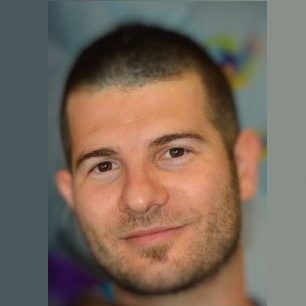Advances in Biomedical Image Processing and Artificial Intelligence for Computer-Aided Diagnosis in Medicine
A special issue of Journal of Imaging (ISSN 2313-433X). This special issue belongs to the section "Medical Imaging".
Deadline for manuscript submissions: 31 July 2024 | Viewed by 1851
Special Issue Editors
Interests: computer vision; image processing; machine learning; deep learning; artificial intelligence; medical image analysis; biomedical image analysis
Special Issues, Collections and Topics in MDPI journals
2. Research Affiliate Long Term, Laboratory of Computational Computer Vision (LCCV), School of Electrical and Computer Engineering, Georgia Institute of Technology, Atlanta, GA, USA
Interests: biomedical image processing and analysis; radiomics; artificial intelligence; machine learning; deep learning
Special Issues, Collections and Topics in MDPI journals
Interests: computer vision; image retrieval; biomedical image analysis; pattern recognition and machine learning
Special Issues, Collections and Topics in MDPI journals
Interests: computer vision; medical image analysis; shape analysis and matching; image retrieval and classification
Special Issues, Collections and Topics in MDPI journals
Interests: non-invasive imaging techniques: positron emission tomography (PET), computerized tomography (CT), and magnetic resonance (MR); radiomics and artificial intelligence in clinical health care applications; processing, quantification, and correction methods for ex vivo and in vivo medical images
Special Issues, Collections and Topics in MDPI journals
Special Issue Information
Dear Colleagues,
With the digitization of medical data, various artificial intelligence techniques are now being employed. Radiomics and texture analysis are possible through the use of positron emission tomography, computerized tomography, and magnetic resonance imaging. Machine and deep learning techniques can aid in improving therapeutic tools, diagnostic decisions, and rehabilitation. Nevertheless, diagnosing patients has become more difficult due to the abundance of data from different imaging techniques, patient diversity, and the necessity to consider data from various sources, leading to the domain shift problem. Radiologists and pathologists rely on computer-aided diagnosis (CAD) systems to analyze biomedical images and address these challenges. CAD systems help reduce inter- and intra-observer variability, which occurs when different physicians assess the area under the same assumptions or at different times. Additionally, data access can be prevented due to privacy, security, and intellectual property concerns. Synthetic data are increasingly being explored in this context to address these issues. This Special Issue is connected to the 2nd International Workshop on Artificial Intelligence and Radiomics in Computer-Aided Diagnosis (AIRCAD 2023) but is open to additional submissions addressing topics relevant to the Special Issue’s scope. This Special Issue will cover the latest developments in biomedical image processing using machine learning, deep learning, artificial intelligence, and radiomics features, focusing on practical applications and their integration into the medical image processing workflow.
Potential topics include but are not limited to the following: biomedical image processing; machine and deep learning techniques for image analysis (i.e., the segmentation of cells, tissues, organs, and lesions and the classification of cells, diseases, tumors, etc.); image registration techniques; image preprocessing techniques; image-based 3D reconstruction; computer-aided detection and diagnosis systems (CADs); biomedical image analysis; radiomics and artificial intelligence for personalized medicine; machine and deep learning as tools to support medical diagnoses and decisions; image retrieval (e.g., context-based retrieval and lesion similarity); CAD architectures; advanced architectures for biomedical image remote processing, elaboration, and transmission; 3D vision, virtual, augmented, and mixed reality applications for remote surgery; image processing techniques for privacy-preserving AI in medicine.
Dr. Andrea Loddo
Dr. Albert Comelli
Dr. Cecilia Di Ruberto
Dr. Lorenzo Putzu
Dr. Alessandro Stefano
Guest Editors
Manuscript Submission Information
Manuscripts should be submitted online at www.mdpi.com by registering and logging in to this website. Once you are registered, click here to go to the submission form. Manuscripts can be submitted until the deadline. All submissions that pass pre-check are peer-reviewed. Accepted papers will be published continuously in the journal (as soon as accepted) and will be listed together on the special issue website. Research articles, review articles as well as short communications are invited. For planned papers, a title and short abstract (about 100 words) can be sent to the Editorial Office for announcement on this website.
Submitted manuscripts should not have been published previously, nor be under consideration for publication elsewhere (except conference proceedings papers). All manuscripts are thoroughly refereed through a single-blind peer-review process. A guide for authors and other relevant information for submission of manuscripts is available on the Instructions for Authors page. Journal of Imaging is an international peer-reviewed open access monthly journal published by MDPI.
Please visit the Instructions for Authors page before submitting a manuscript. The Article Processing Charge (APC) for publication in this open access journal is 1800 CHF (Swiss Francs). Submitted papers should be well formatted and use good English. Authors may use MDPI's English editing service prior to publication or during author revisions.
Keywords
- CAD architectures
- biomedical image processing
- machine learning
- deep learning
- biomedical image analysis
- radiomics
- artificial intelligence
- personalized medicine
- privacy-preserving AI










